#fossil plate
Explore tagged Tumblr posts
Text
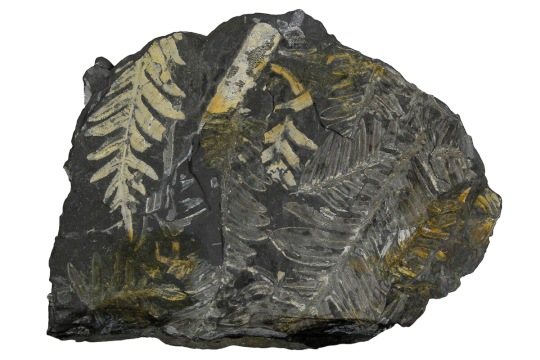

6.3" Fossil Seed Fern (Alethopteris) Plate - Pennsylvania
#Pennsylvanian#alethopteris#fossil seed fern#fossil fern#fern fossil#seed fern#fossil plate#plant fossil#plant#fossil#fossils#paleoblr#png#transparent#paleontology#prehistoric#ferns
89 notes
·
View notes
Photo

Fossil Bryozoan Sea Floor Slab – Silurian Wenlock Limestone, Wrens Nest Dudley UK
A beautifully preserved Fossil Sea Floor Slab featuring colonial bryozoans, sourced from the Wenlock Limestone Formation and dated to the Wenlockian Stage of the Silurian period (~428–423 million years ago). This fossil originates from the iconic Wrens Nest site in Dudley, West Midlands, UK — a globally important locality and one of the UK’s most famous fossil sites.
Bryozoans, often referred to as “moss animals,” are colonial, filter-feeding marine invertebrates that flourished in Silurian reef environments. This specimen displays a dense patch of bryozoan colonies encrusting the sea floor slab, capturing the biodiversity and ecological dynamics of ancient tropical marine settings.
Fossil Type: Colonial Bryozoans (marine invertebrates)
Geological Age: Silurian – Wenlockian Stage
Formation: Wenlock Limestone Formation
Depositional Environment: The Wenlock Limestone was formed in a warm, shallow marine environment, characterised by reef systems, carbonate platforms, and high biodiversity. These conditions facilitated extensive bryozoan growth alongside corals, crinoids, brachiopods, and trilobites.
Morphological Features:
Encrusting colonies with finely detailed zooecial structures
Calcareous, branching, or sheet-like growth patterns
Preserved in original sea floor matrix with natural bedding plane
Notable:
Genuine fossil from a Site of Special Scientific Interest (SSSI)
Rich marine fossil content from a classic British Silurian locality
Excellent display specimen or educational aid
Photo shows the exact item you will receive
Authenticity: All of our fossils are 100% genuine natural specimens and come with a Certificate of Authenticity. The scale in the photo shows 1cm per square or cube – please consult the image for full dimensions.
This bryozoan sea floor slab from the Silurian reef ecosystems of Dudley offers a remarkable window into early marine life and is a striking addition to any fossil collection.
#Bryozoan fossil#Wenlock Limestone fossil#Silurian fossil UK#Wrens Nest fossil#Dudley sea floor fossil#marine invertebrate fossil#fossil colony#Wenlockian bryozoan#UK palaeontology#reef fossil slab#fossil plate#genuine bryozoan specimen#Silurian reef fossil#collector fossil
0 notes
Text

archaeopteryx 🪶
#I need to take a closer look#but I don't think this one ended up being food-safe either... maybe someday I can make a cool plate that you can actually serve food on#ceramics#ceramistakes#fossil#archaeopteryx
548 notes
·
View notes
Text










A few recent photos taken down at the creek to finish 2024 out!
For 2025, my goals are to make a lot more art and spend a lot more time out in nature. Mainly just aiming to survive and thrive. <3
I hope this coming year brings SO much love and joy and prosperity to all of you wonderfully rad folks. Thank you for making this world a better and brighter place <3
#nature#vulture culture#fossils#animal tracks#dead animal#wildlife#creek#mushroom#red shouldered hawk#coyote tracks#license plate
62 notes
·
View notes
Text

The travertine deposits where it is found are geothermal. The sudden change in temperature due to technonic movements contributed to the rapid disappearance of the soft tissues of the crabs and the fossilization of their shells by covering them with sedimentary layers.


Tiny Travertine crab
#sea fossil#special collections#fossil collection#fossils#geology#rocks and minerals#collectibles#fossil#marine biology#marine life#nature history#paleontology#crab#crab fossil#geolocation#prehistoric#3d stuff#nature#plate tectonics#geothermal
42 notes
·
View notes
Text



Giraffatitan 2024
#this being tumblr you will all enjoy that i had a disconnect between brain and fingers and definitely wrote giraffatit and left it#for a good 15 seconds#pottery#my art#dinosaurs#fossil art#plate#ceramics#insert funny queue tag
51 notes
·
View notes
Text
Throwback Thursday: Continental Drift
Before there was the Theory of Plate Tectonics, there was the theory of continental drift. Almost as soon as maps were invented , people noticed how certain continents looked like they could be pieced together. In 1800, Alexander von Humboldt noticed that the west coast of Africa and the east coast of South America seemed to fit together.
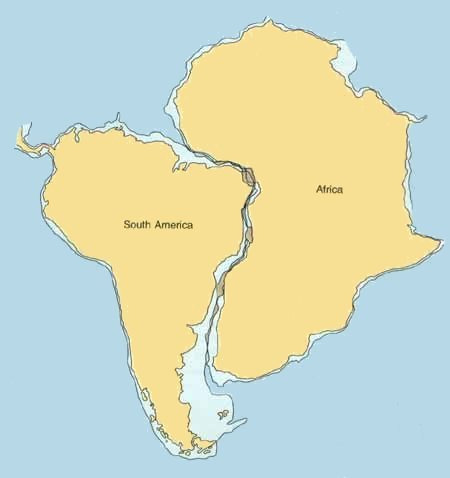
Antonio Snider-Pellegrini, a French geographer and geologist in the 1800s noticed that North American and European coal deposits had identical plant fossils. e said ha could be explained if the two continents had been joined. He even drew his own map:
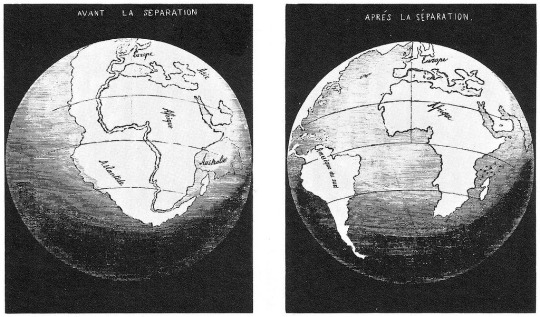
Perhaps the most well known of the geologists to bring up continental drift was Alfred Wegener. Born in 1880 in Berlin, he would become a very important figure in 20th century science.
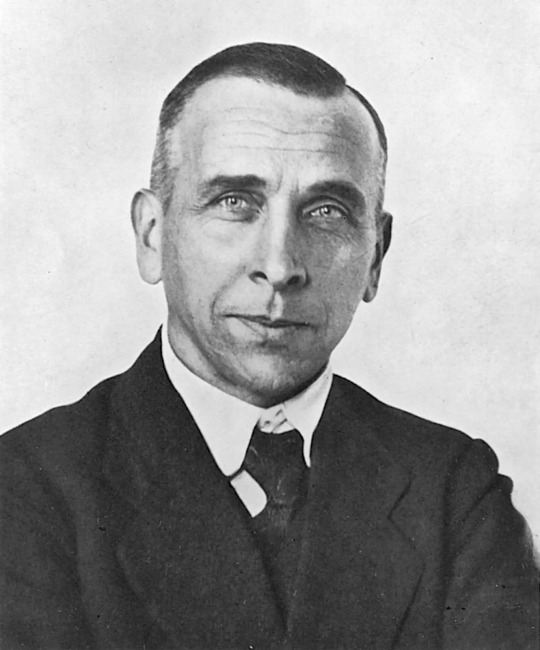
He was primarily a climatologist but his feld work led him to some very big ideas. He too noticed how the landmasses seemed to fit together. He drew this to demonstrate the drifting pattern.
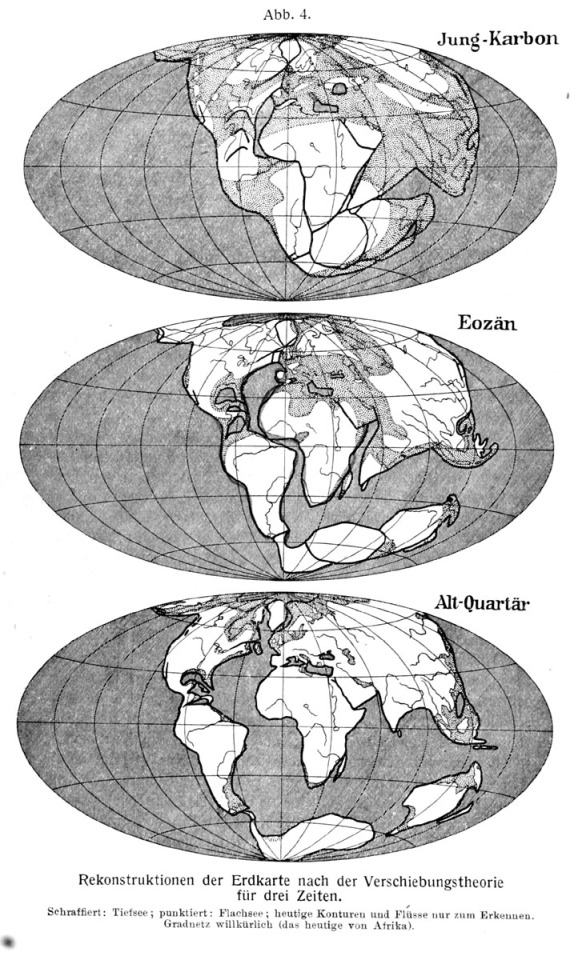
He did more than look at maps though. He analysed both sides of the Atlantic Ocean and found matching rock types, matching geologic structures and matching fossils.
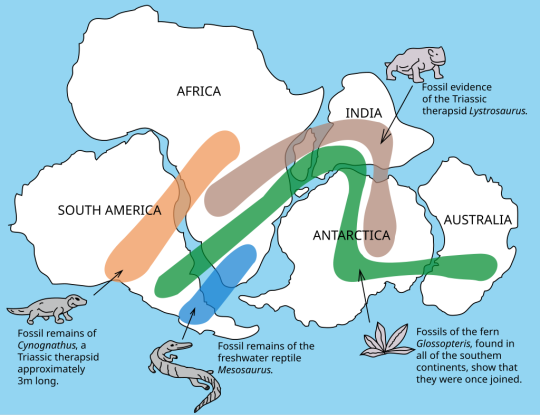
The biggest issue he had in publicly advocating for this was that he had no method for how continental drift worked. Unfortunately, he would never know the mechanism as it was discovered in the 1960's long after his death.
Want to know more about Alfred Wegener and his Theory of Continental Drift? Check out my mini Geology 101 lessons on Patreon!
#fun facts#geology#science#science education#plate tectonics#fossils#rocks#rock formations#continental drift
25 notes
·
View notes
Text

We found a couple shark teeth fossils today. You know, one or two.
#mckittericks rl#fossils#sharks#we also found a ton of turritella shells#and ray dental plates#and saw some skinks and a frog#and vultures bald eagle and maybe osprey#it was a good day
8 notes
·
View notes
Text
i am truly so frightened of the american decline. why am i searching for an article on a basic theory of geology right now and getting nothing but young earth propaganda multiple pages deep
#i searched ‘sealife fossils on mountains’ btw#and then i literally added ‘tectonic plates’ to the search and nothing changed?????#🙃🙃🙃#emma speaks#ON GOOGLE. REGULAR GOOGLE
4 notes
·
View notes
Text
Felt a small shake and was confused as to what the fuck that was until I checked my phone. Which alerted me to a small earthquake.
Ah.
#emp.txt#it was only brief but still i've never felt an earthquake before#aus is mainly on the one plate!#but. climate change. also lots of fossil fuel mining and whatnot#nothing broke in my house so that's something. it was like 3 secs or smth
5 notes
·
View notes
Text
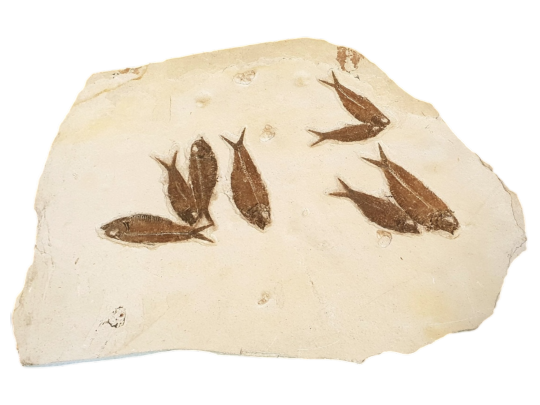
plate of 8 fossil fish specimens -Knightia eocena- Ypresian Wyoming USA
#knightia#fossil fish#fish fossil#fossil#fish#png#fossils#transparent#fossilized#paleontology#wyoming#paleoblr#prehistoric#fossil plate#mutli#fossil specimen
78 notes
·
View notes
Photo

Fossil Bryozoan Sea Floor Slab – Silurian Wenlock Limestone, Wrens Nest Dudley UK
A beautifully preserved Fossil Sea Floor Slab featuring colonial bryozoans, sourced from the Wenlock Limestone Formation and dated to the Wenlockian Stage of the Silurian period (~428–423 million years ago). This fossil originates from the iconic Wrens Nest site in Dudley, West Midlands, UK — a globally important locality and one of the UK’s most famous fossil sites.
Bryozoans, often referred to as “moss animals,” are colonial, filter-feeding marine invertebrates that flourished in Silurian reef environments. This specimen displays a dense patch of bryozoan colonies encrusting the sea floor slab, capturing the biodiversity and ecological dynamics of ancient tropical marine settings.
Fossil Type: Colonial Bryozoans (marine invertebrates)
Geological Age: Silurian – Wenlockian Stage
Formation: Wenlock Limestone Formation
Depositional Environment: The Wenlock Limestone was formed in a warm, shallow marine environment, characterised by reef systems, carbonate platforms, and high biodiversity. These conditions facilitated extensive bryozoan growth alongside corals, crinoids, brachiopods, and trilobites.
Morphological Features:
Encrusting colonies with finely detailed zooecial structures
Calcareous, branching, or sheet-like growth patterns
Preserved in original sea floor matrix with natural bedding plane
Notable:
Genuine fossil from a Site of Special Scientific Interest (SSSI)
Rich marine fossil content from a classic British Silurian locality
Excellent display specimen or educational aid
Photo shows the exact item you will receive
Authenticity: All of our fossils are 100% genuine natural specimens and come with a Certificate of Authenticity. The scale in the photo shows 1cm per square or cube – please consult the image for full dimensions.
This bryozoan sea floor slab from the Silurian reef ecosystems of Dudley offers a remarkable window into early marine life and is a striking addition to any fossil collection.
#Bryozoan fossil#Wenlock Limestone fossil#Silurian fossil UK#Wrens Nest fossil#Dudley sea floor fossil#marine invertebrate fossil#fossil colony#Wenlockian bryozoan#UK palaeontology#reef fossil slab#fossil plate#genuine bryozoan specimen#Silurian reef fossil#collector fossil
0 notes
Text
A Record-Breaking Old Bean
ESP version ITA version
Can a seed be among the largest ever recorded in the fossil record, represent the first evidence of migration between tectonic plates towards the Australian region, and also be the only known ancestor of the Moreton Bay chestnut (Castanospermum australe)?
The answer is a resounding yes.
Who are we talking about? Its name is Jantungspermum gunnellii, a leguminous plant dating back to the Eocene period, approximately 34-40 million years ago. The discovery of this plant was the result of extreme determination and, perhaps, a bit of luck. Collecting fossils in southern Borneo is a considerable challenge: most of the surface rocks are constantly eroded by heavy tropical rains, covered by dense vegetation, and in many cases, overshadowed by buildings or agricultural land. Despite these difficulties, in 2014, a team of researchers collected three large fossil seeds from the seams of a coal mine in South Kalimantan, Indonesian Borneo, the largest of which measured 7.2 cm in length, along with 43 leaves and two pollen samples. All the material was brought to the laboratory for detailed analysis.
To the great surprise of the researchers, the seeds found appear to be ancient relatives of the Castanospermum genus, of which today only one species exists worldwide. However, this lineage hides further surprises linked to tectonic movements. The collision between the tectonic plates of Southeast Asia and Australia, which began about 20 million years ago and is still ongoing, has led to a significant exchange of plant and animal species between these land masses. During the Cenozoic era, the area was affected by two major geological events: the Asia-India and Sahul-Sunda collisions. Sahul is part of the continental platform of the Australian continent and lies off the coasts of Australia, while Sunda is part of the Eurasian plate. The contact and collision between these regions allowed numerous plant lineages from Australia to migrate to Asia. This is evident from the fact that species found in the Asian fossil records are also present in the older Australian fossil records, suggesting that these plants initially evolved in Australia and later colonized Asia, providing a clear temporal signal of the migration.
But could the plants have made the reverse journey, from Asia to Australia? The rarity of plant macrofossils from Sunda has so far limited the understanding of pre-collision vegetation and the plants that migrated from Sunda to Sahul. Evidence in this regard was scarce and mainly based on palynological and molecular data. Until now. The discovery of this seed has provided the first macrofossil evidence of a plant evolutionary line that moved from Asia to Australia. Since Jantungspermum belongs to the same subfamily as Castanospermum, we can also hypothesize how the seeds may have dispersed. Today, Castanospermum disperses its seeds using floating, salt-tolerant pods that can travel for kilometers in rivers and oceans, especially after storm events. The fossil seeds of Jantungspermum were recovered from the upper Tambak Member (a member is a part of a geological formation distinguishable from the rest of the formation by its lithological characteristics) in a coastal depositional paleoenvironments, probably brackish, suggesting that their pods traveled a significant distance, similarly to its descendants, from the riparian parent plant before disintegrating and releasing their seeds.
The incredibility of this seed does not end here. These fossils also represent the oldest legume fossils in the Malay Archipelago. Moreover, the seeds are among the largest ever recorded in the fossil record, excluding coconuts and some other palms. They likely grew in a pod that reached the length of a baseball bat and could contain up to five seeds. The name Jantungspermum gunnellii derives from the Indonesian word "Jantung," which means heart, in reference to the shape of the fossil seed. "Spermum" means seed in Latin, while the specific term "gunnellii" is a tribute to the late Gregg Gunnell, a vertebrate paleontologist formerly at the Duke University Lemur Center, who led the expedition.
There are still many stories buried beneath the rock, and sometimes, a small yet big seed can reveal one of them.
source

#fossils#paleontology#botany#migration#prehistoric plants#Eocene#legumes#Australia#Asia#evolution#scientific discoveries#macrofossils#geology#tectonic plates#bean#giant bean#castanospermum
2 notes
·
View notes
Text
i could spend my entire life shark tooth fossil hunting at a river and never get bored with it and i think that trait should be more useful for me to have
#i have so many fossilized shark/skate/ray teeth/dental plates and cetacean+turtle bones#i don't even do anything with them i just hoard them and sometimes look at them like 'wow these animals were around such a long time ago'#everyone else i know gets bored and gives up so fast. they will never understand the thrill
1 note
·
View note
Text
it is crazy how every year the gap in performance between my gen ed classes and my advanced class keeps growing like crazy. today we started the first lesson of a new unit and in all but one of my gen classes we didn’t even finish, whereas my advanced class not only finished the lesson with 20 minutes left of class, they proved to me that they know literally everything from the unit so i dont even need to teach it. lesson one. of unit one. and also they got into a very heated battle over who would get to read out loud.
#7th graders man#some kids in my gen ed classes didnt even know what a fossil was#which was terrifying#we’re learning about plate tectonics
0 notes
Text
What Is Earth »Age, Radius, Earth Plates, Structure, Climate
What Is Earth » Age, Radius, Earth Plates, Rotation, Warming What is Earth » Earth is the third planet from the Sun in our solar system and the only known celestial body to support life. It is the fifth-largest planet by diameter and the densest of all the planets. What Is Earth »Age, Radius, Earth Plates, Structure, Climate Scales Of The Universe » This Distance Is Equal To 9.46 X 1015 M Or…

View On WordPress
#Age#altitude#Annual Speed#Aphelion#Climate#Earth#Earth Plates#Earth&039;s climate#Earth&039;s natural resources#fertile soil#forests#fossil fuels#fresh water#Gaseous Hypothesis#How many countries are there in the world#Interstellar Dust Hypothesis#Jupiter-Sun Duality Hypothesis#latitude#Minerals#Perihelion#Planetary Hypothesis#proximity to water#Radius#revolution period#Revolutions#Rotation#Scales Of The Universe#Shephid Hypothesis#Structure#Supernova Hypothesis
0 notes